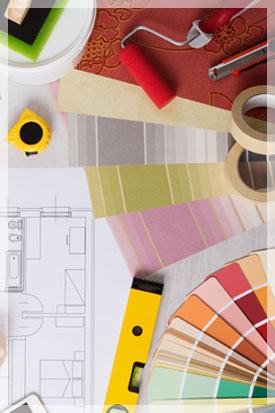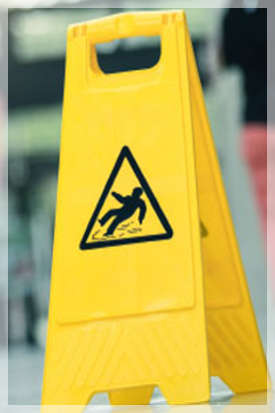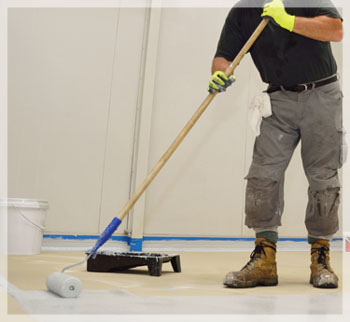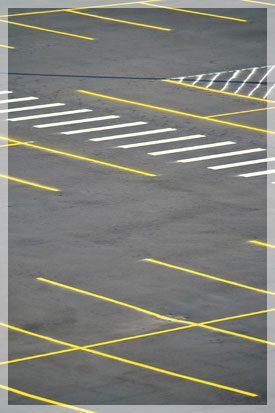4 Benefits of Commercial Floor Coatings
 If you work in a garage, school, restaurant or other location with highly-trafficked floors, a commercial floor coating may be beneficial for your business. These materials can resist the effects of constant foot traffic without compromising the look of non-carpeted floors.
If you work in a garage, school, restaurant or other location with highly-trafficked floors, a commercial floor coating may be beneficial for your business. These materials can resist the effects of constant foot traffic without compromising the look of non-carpeted floors.
What are the benefits of having a commercial floor coating installed in your building?
More Durable Surface
We offer the following coatings to commercial building owners:
- Epoxy
- Electrostatic dissipative coating
- Moisture vapor reducer
- Concrete coatings
- Urethane top coats
- Cement resurfacers
These materials are meant to withstand a considerable amount of wear and tear from both people and vehicles. Get work done more efficiently, rather than worrying about the aesthetic appearance of your warehouse.

 A company’s office building says a lot about the business. From the road, people likely pass your commercial property every day; the way it looks from the outside can have a direct impact on what potential customers think. If their first impression is negative due to an issue with water damage, it may be time to contact the professionals.
A company’s office building says a lot about the business. From the road, people likely pass your commercial property every day; the way it looks from the outside can have a direct impact on what potential customers think. If their first impression is negative due to an issue with water damage, it may be time to contact the professionals.  When decorating a home, you have some degree of freedom. If you’ll be reselling in the future, you may be more cautious about wallpaper patterns but overall, your home is your space to play with.
When decorating a home, you have some degree of freedom. If you’ll be reselling in the future, you may be more cautious about wallpaper patterns but overall, your home is your space to play with. When you arrive at the office in the morning, what do you see? Dull, beige walls and lined cubicles or bright colors and open-concept workspaces? Although you may love your job, your work environment has an impact on mood and productivity. If the space is gloomy and lackluster, your employees may feel uninspired. How can you liven up your office in a way that benefits your staff and clients? Consider a wall mural!
When you arrive at the office in the morning, what do you see? Dull, beige walls and lined cubicles or bright colors and open-concept workspaces? Although you may love your job, your work environment has an impact on mood and productivity. If the space is gloomy and lackluster, your employees may feel uninspired. How can you liven up your office in a way that benefits your staff and clients? Consider a wall mural!  For the average homeowner, the impression that guests have of your home is important. The typical business owner works just as hard to make their office space a welcoming environment for clients. When your interior rooms have cracked or peeling paint, it defeats that goal.
For the average homeowner, the impression that guests have of your home is important. The typical business owner works just as hard to make their office space a welcoming environment for clients. When your interior rooms have cracked or peeling paint, it defeats that goal.  Choosing paint colors for your home is pretty easy when you only have yourself to satisfy. However, when you are planning on painting the interior of an office, retail store or restaurant, you also need to take staff and client opinions into account.
Choosing paint colors for your home is pretty easy when you only have yourself to satisfy. However, when you are planning on painting the interior of an office, retail store or restaurant, you also need to take staff and client opinions into account.  If you own an office or commercial building, it is essential to protect it from the elements. As an owner, you are responsible for the building upkeep, as well as the tenant’s safety. When autumn rolls around, there are several seasonal hazards that can cause damage to your building. In certain circumstances, it may be enough that you need to close.
If you own an office or commercial building, it is essential to protect it from the elements. As an owner, you are responsible for the building upkeep, as well as the tenant’s safety. When autumn rolls around, there are several seasonal hazards that can cause damage to your building. In certain circumstances, it may be enough that you need to close. While commonly associated with garages, epoxy coatings are growing in trend, especially in commercial areas. It is a protective material made from epoxy resin, a viscous substance. Due to foot traffic and equipment usage, facilities experience a high level of wear and tear, which adds up over time and requires costly repairs. Additionally, cracks and wet, slick surfaces present slip and fall risks, which an even, non-slip coating can help reduce.
While commonly associated with garages, epoxy coatings are growing in trend, especially in commercial areas. It is a protective material made from epoxy resin, a viscous substance. Due to foot traffic and equipment usage, facilities experience a high level of wear and tear, which adds up over time and requires costly repairs. Additionally, cracks and wet, slick surfaces present slip and fall risks, which an even, non-slip coating can help reduce. If you’re a business owner, you probably know that a visitor’s first impression of you can be formed by the state of your parking lot. If the pavement displays cracks, worn lines or pot holes, this shows people that you simply do not care.
If you’re a business owner, you probably know that a visitor’s first impression of you can be formed by the state of your parking lot. If the pavement displays cracks, worn lines or pot holes, this shows people that you simply do not care.